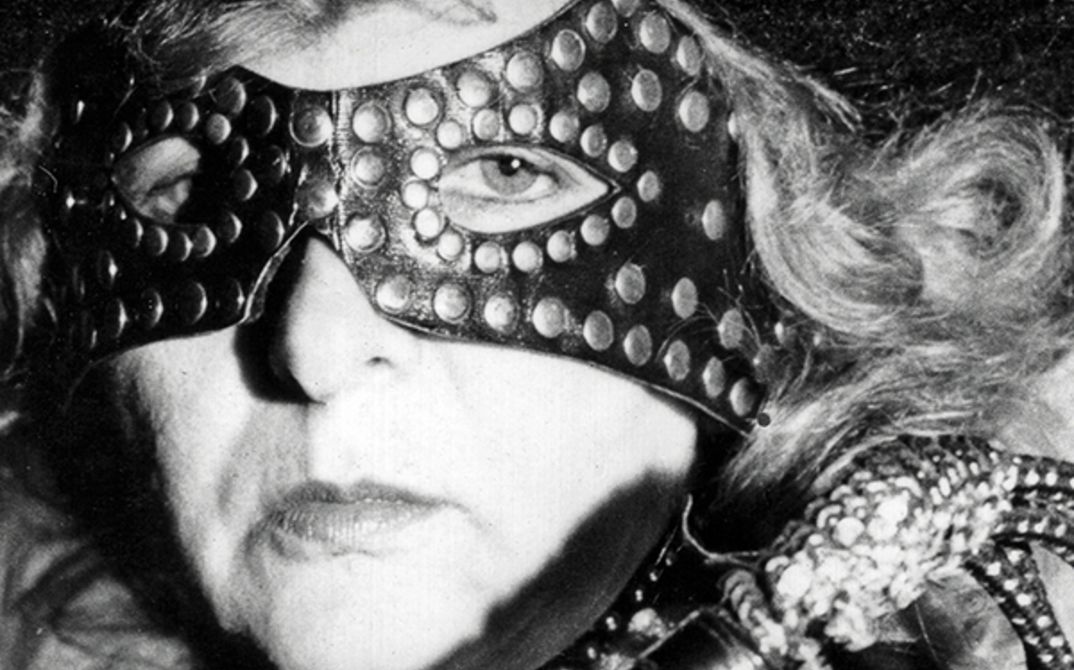There is no time in the unconscious
VIL, MÁ – the film title in Portuguese means “bad, evil”, and it’s also the name of the main character, Wilma. Through this title, I wanted to play with the idea that the film talks about a split personality, and the film is also split in two parts that reflect each other. But two parts that make up a single character, and a single film. And that’s why I didn’t change the aesthetics between the parts, because I also wanted to emphasise the similarities between them – and that, on the surface, we can all look alike, while being a dominatrix or a devoted mother on the inside.
Wilma is the name she chose for her persona as a writer of erotica, in opposition to her birth name Edivina, which means “divine” and relates to all the religiosity of her upbringing.
I believe this is a film about sexuality and literary creation. VIL, MÁ should reflect two possible images of a woman embodied in the same person. And that’s why the language is so important. In the first part we see Wilma, this strong and fearless woman who is not ashamed of anything and wants to learn all about sex and write about it. In the second part Edivina is a woman with a broken marriage who has to create another self in order to find money for her kids and freedom for her desires. The parts contaminate each other, since Edivina is Wilma’s creator, but she is also transformed through her. And Wilma is not only a person, she is also the mask that allows Edivina to transform her desires into action.
A “Trilogy of the self”
Is Wilma really just fiction, just a pseudonym? The limits are blurred, and I think everything can be true inside a creative mind. In this narrative, everything is mixed together: the fictions she wrote, her memories of her fictions, the reality she used in the fictions to disguise her desires from society and even from herself; her reality, her memories of her reality, and the fantasies she created from her reality in order to make it more amusing or bearable.
VIL, MÁ was shot in 2013, but I only managed to finish it in 2020. I think that says a lot about the time I needed to understand the complexity of a soul that allows herself to live in different times and with different beliefs. I had to make two more films with a single character, I REMEMBER THE CROWS (2018) and THE BLUE ROSE OF NOVALIS (2019), to finally complete this possible “trilogy of the self” – ending exactly where it began.
I think creativity is the complete fusion of fiction and reality. According to Jung, there is no time in the unconscious, everything is in the present. And although we see archival pictures and hear the voice of another woman sitting behind her – Wanda, her younger alter ego – reading her short stories and the adaptations she made of her readers’ letters, aren’t those like images and sounds from a dream? Isn’t the past a creation we can access in our memories, just like in a dream? All that exists is what Wilma/Edivina tells us in the present, sitting in that chair...
Wanda, whose name refers to the character in Masoch’s “Venus in Furs”, is presented as an actress who is there to observe Wilma/Edivina’s life for a future film we don’t get to see. The film we are watching represents both the future film, and the past film – again, because there is no concept of time. The living room where Wilma/Edivina sits is the unconscious itself. Wanda functions as a representation of Wilma/Edivina in the past, being used as a “slave” to serve the present. The projections of the past are dependent on what Wilma/Edivina wants to be showed in her present. Again, the memories are recreations... And Wilma and Edivina are the masters, often contradicting themselves. But memories can also be tricky sometimes, like rebellious sex slaves.
The mental archive: dreams, desires, creativity
My biggest inspiration for making a documentary is exactly this: to use the mental archive of a character – dreams, desires, fetishes, longings, creativity – as the core of a film. But in VIL, MÁ, the physical archive – in this case, photographs – also plays a role. The first part of the film is about the archive of a history that is not usually told or even documented: the sex life of a woman who is completing 80 years of existence in 2020, and her publications as a writer of erotica. In the second part we see the "official" archive: pictures of her family, career, and articles as a regular journalist. Wilma/Edivina is a woman whose history is relevant in a conservative country like Brazil, which ranks fifth in the world for femicide. This violence is linked to men who want to moralise women and tell them how to use their own bodies. The stories of a lady of this age who still freely enjoys her sexuality and who is the one exerting violence on men (in this case consensually) offer an inspiring portrait of strength, even with all the contradictions that make up her complex character.
I believe that watching this religious and yet sensual woman, who is old enough to be the mother of a fascist president, is a way of affirming that we are far more complex than this government wants us to believe. Evil and divine can walk together, as can faith and sex. (Gustavo Vinagre)
